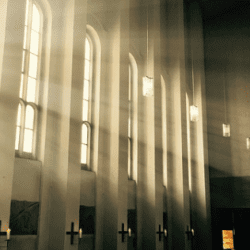Crowdsourcing is the popular term for what is more commonly known in academia as distributed co-creation[1]. This problem solving methodology seems to better enable innovation as it creates an economy built upon the power of the idea rather than upon the position or power of the one proposing the idea while at the same time leveraging the benefits of diversity. Diverse individuals tend to uncover better solutions through crowdsourcing. They see and interpret the world in diverse ways. They organize what they see and experience in different cognitive categories. They approach problem solving with a variety of methodologies. And, they view the causes and effects of their decisions from differing perspectives. As such, diverse perspectives advantage almost everyone in some manner due to the unique information diverse individuals bring to the problem solving table.[2]
For example, MBAs engage their surroundings with a certain set of skills. These skills would be called upon to forecast the profit to loss ratios for an organization’s upcoming product launch. However, this set of common skills would disadvantage them to some degree by providing them with a singular view of the product launch through the lens of an MBA. This specialized group would likely be unaware the musical artist who was secured to endorse their new product had lyrics in an upcoming album that were going to be offensive to a large group of the population thereby decreasing product sales by their association with this artist. Perhaps if the shipping clerk in the cubicle downstairs or the individual who answers the phone for the office had been consulted, they could have avoided the unforeseen public relations debacle in which they were about to become entangled.
For an example closer to home, suppose a group of pastors who have been to seminary and earned their Masters of Divinity degree got together to ascertain the best way to enlist volunteers in outreach to the community. Their training predisposes them to a theological perspective. While this perspective and understanding inspires their actions, a better way to engage volunteers might come from the organizational theory professor at a local university or perhaps from an NPO manager from across the country. Diverse perspectives can enable better solutions to complex problems.
One of the most recognizable examples of crowdsourcing we can discuss is Wikipedia. While it would be natural to assume the social anarchy of the Internet would negate any confidence one might place in the accuracy of the articles on Wikipedia, research conducted by Nature magazine shows the accuracy of Wikipedia is actually comparable to that of the Encyclopedia Britannica with only 3.86 errors per article on Wikipedia compared with 2.92 errors per article for Britannica.[3] The key to Wikipedia’s success hinges on the fact that those most qualified tend to edit and correct the postings of those who are not in an ongoing, albeit somewhat chaotic process. Not to be left out of this crowdsourcing phenomenon, corporate America is attempting to leverage ways in which they can monetize the benefits of crowdsourced problem solving. Let’s look at a few examples.
Innocentive[4] provides a crowdsourcing platform upon which organizations post challenges that offer a financial reward to the person or persons who propose the best solution. The amounts of the financial rewards vary from challenge to challenge. For example: Maintaining Crunchy in a Moist Environment – $40,000, Sorting and Compacting of Washroom Waste Bins – $25,000, or Harvesting the Energy in Buildings – $15,000.[5]
Historically, if an organization wanted to solve difficult problems such as these, they would need to hire a staff of engineers to uncover a solution. However, the beauty of crowdsourcing lies in the fact that, more than likely, someone out there knows how to do what you want to do, or at the very least they know a step in the right direction. A cash reward to the individual or team that comes up with the best solution is money well spent as far as the company is concerned, as it allows the money saved to be better utilized bringing this new solution to market.
Threadless.com sells printed t-shirts although there are no t-shirt designers on staff. Instead, the crowd submits t-shifts design for consideration. The crowd then determines which designs are selected for production as they vote for their favorite designs. The crowd submits, the crowd votes, and the crowd affirms their decision by purchasing t-shirts.
Quirky.com is another example of innovation being fueled via crowdsourcing in that Quirky allows inventors to submit designs or suggestions for new products to their website. When an idea is submitted, Quirky encourages people to vote on the product and/or contribute ideas for its improvement. Quirky then takes the best ideas (those with the greatest number of votes), manufactures them and brings them to market. A device currently offered for sale on Quirky.com is something called the Pivot Power. Quirky states the inventor thus far has earned over $11,000 while the community of contributors that helped in the design have earned over $18,000. The math would suggest, crowdsourcing works quite well for Quirky.com.
For those of us unable to design and build our own crowdsourcing platforms, Ideascale[6] enables the creation of custom platforms to meet the needs of a variety of organization both large and small. In the large category, the Department of Energy is leveraging crowdsourcing to uncover “green” solutions to the energy challenges facing us in their Energy Challenge.[7] On the smaller end of the spectrum, Ideascale is the platform Len Sweet and I use for our Crowdsourcing Theology projects, more on this later.
Based upon the economies and benefits of crowdsourcing, the question arises: is crowdsourcing an appropriate methodology to help uncover solutions to some of the more pressing challenges facing our Church? In the following series of articles we will attempt to answer that question by looking at the advantages diversity brings to decision making, the theological implications of crowdsourcing, and the ways in which crowdsourcing is currently being used to uncover theological and practical solutions for our Church.
[1] Scott E. Page, The Difference: How the Power of Diversity Creates Better Groups, Firms, Schools, and Societies (New Edition) (Princeton: Princeton University Press, 2008).
[2] F.A. Hayek, “The Use of Knowledge in Society,” American Economic Association 35, no. 4 (Sep., 1945): 521-522.
[3] http://news.cnet.com/2100-1038_3-5997332.html
[5] https://www.innocentive.com/ar/challenge/browse
[7] http://energychallenge.energy.gov
After many years in the creative and business sides of television and music production on both the local and national level, Dr. Thomas Ingram now divides his time between research/writing and mentoring/coaching/encouraging others in their efforts to pursue God’s purpose for their lives. Ingram is the author of The New Normal: A Diagnosis the Church Can Live With. He holds a Bachelors of Science in Psychology, a Master of Business Administration in Leadership and a Doctor of Ministry in Semiotics and Future Studies. You can connect with Tom’s work at www.thomaseingram.com or email him at [email protected].













